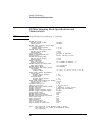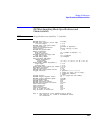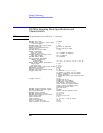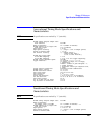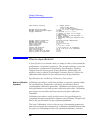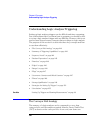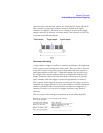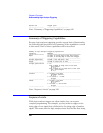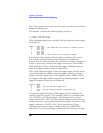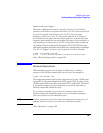
240
Chapter 6: Concepts
Understanding Logic Analyzer Triggering
Understanding Logic Analyzer Triggering
Setting up logic analyzer triggers can be difficult and time-consuming.
You could assume that if you know how to program, you should be able
to set up a logic analyzer trigger with no difficulty. However, this is not
true because there are many concepts that are unique to logic analysis.
The purpose of this section is to describe these key concepts and how
to use them effectively.
• “The Conveyor Belt Analogy” on page 240
• “Summary of Triggering Capabilities” on page 242
• “Sequence Levels” on page 242
• “Boolean Expressions” on page 245
• “Branches” on page 246
• “Edges” on page 246
• “Ranges” on page 246
• “Flags” on page 247
• “Occurrence Counters and Global Counters” on page 247
• “Timers” on page 248
• “Storage Qualification” on page 249
• “Strategies for Setting Up Triggers” on page 251
• “Conclusions” on page 255
See Also “Setting Up Triggers and Running Measurements” on page 69
The Conveyor Belt Analogy
The memory of a logic analyzer can be compared to a very long
conveyor belt, and the samples acquired from the Device Under Test
(DUT) as boxes on the conveyor belt. At one end, new boxes are



